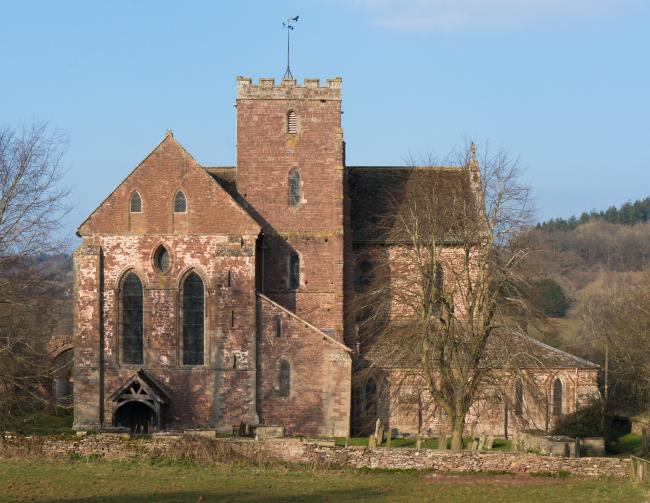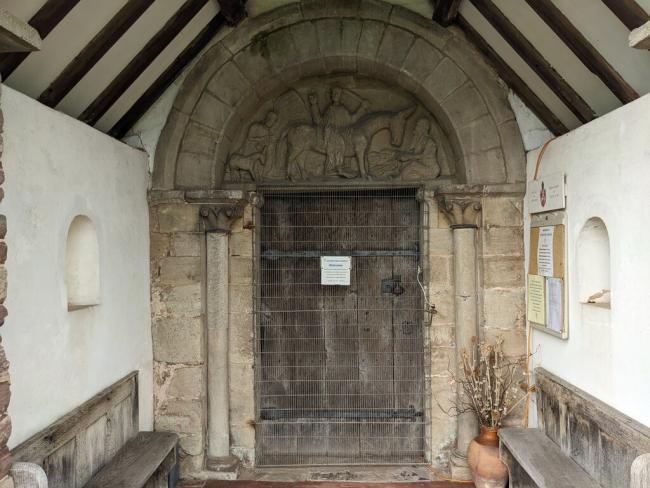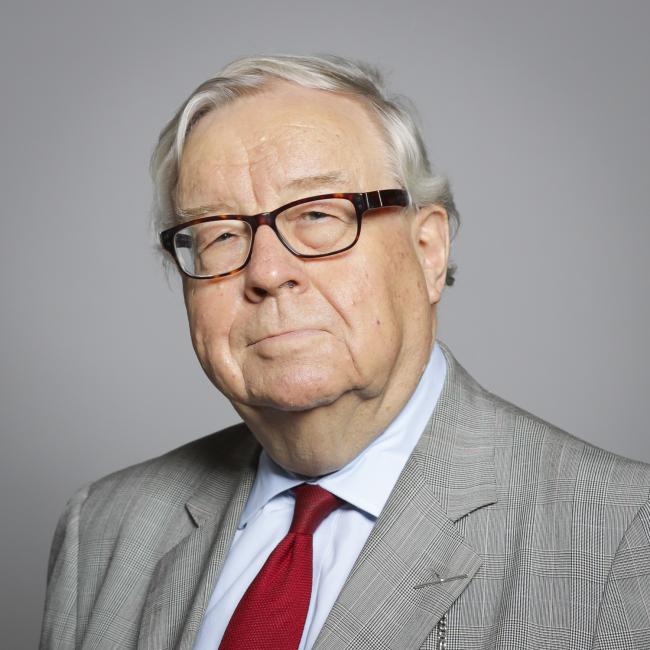Throughout his life, Lord Patrick Cormack was committed to helping churches. We wanted to share some of the different ways that Lord Cormack made a difference and helped to keep churches open and in use across the UK and the lasting legacy he leaves today.
How Dore Abbey led to Lord Cormack joining with us to help save churches
“I was elected to Parliament in June 1970. I had always had a great interest in historic churches and architecture generally,” Lord Cormack shared with us, during an interview a few years ago.
“But during a short post-election holiday my wife and I took in the Golden Valley in Herefordshire, where we visited some marvellous churches. It was when I was in Abbey Dore that I became conscious of the fact that we were not going to keep our great historic churches unless their often-small communities had real help to do so, and by real help I meant state aid.
“So, I decided to campaign in Parliament for state aid for historic churches and I introduced a Private Members’ Bill, which was debated in 1972. Although my Bill was not enacted, the cross-party support and national interest it generated helped to underline the real necessity of doing something about our extraordinary legacy of historic churches.
“Eventually the campaign for state aid came to a successful conclusion with money channelled originally through the Historic Buildings Council and then through English Heritage, the creation of Michael Heseltine in the early years of the Thatcher government. And in 1994 came the National Lottery.
“When I was preparing my Bill, I wrote to a number of people who I thought might be able to furnish me with good examples and useful statistics and one of those to whom I wrote was Hugh Llewellyn-Jones, the Secretary of what was, in those days, the Historic Churches Preservation Trust.”

The Historic Churches Preservation Trust is our predecessor charity. The National Churches Trust was created in 2007 to carry on the work of the Historic Churches Preservation Trust, which was set up in 1953 to award grants to UK historic churches of all denominations, that needed vital repairs.
“Hugh was a very remarkable chap, and he gave me some wonderful examples of very important churches with tiny congregations to sustain them,” continued Lord Cormack.
“He was very supportive of what I was seeking to achieve in Parliament but more than that he wanted to get me involved in the National Churches Trust. So, in 1972 I was invited to become the youngest Trustee.”
Understanding the needs of churches – and saving them
"Shortly afterwards I was appointed to the grants committee which was the most fascinating committee on which I have ever served,” shared Lord Cormack.
“We would go through the list of grant applications very carefully. Every parish had to make a detailed submission and it was also considered necessary for a member of the grants committee to have visited the church, not necessarily in connection with that specific application.
“Occasionally an application would come from a church which none of us knew. So, it was I found myself going to the little church of Aston Eyre, which is just outside Bridgnorth in Shropshire. I went because they needed a grant to restore their church. They had over their north door one of the finest pieces of Norman carving in the country, a Tympanum of Christ entering Jerusalem.”

Lord Cormack understood the needs of local churches – particularly the unique way in which they are funded. The costs of repairs and maintenance falls on parishioners – on the members of the congregation.
“I had a personal example of this many years ago when I was Churchwarden in the Parish of Brewood in Staffordshire,” explained Lord Cormack.
“We suddenly discovered an outbreak of dry rot. During the course of one Sunday, every house in the parish was visited. Almost everyone gave, whether they were Anglicans, Roman Catholic or Free Church, or non-believers.
“They gave because the thought of the village, without its focal point, was something they did not want to contemplate. So, they dug into their pockets, some quite deeply.
“By Evensong we had raised half the money we needed.
“Of course, as church buildings get older, they get more fragile. They need more attention. So, the challenge is to ensure that future generations are as aware of their importance to the fabric of our national life, as their fathers and mothers, and grandfathers and grandmothers, have been.
“I think there is still a great appreciation of our historic churches not confined to believers. Simon Jenkins, with his book England’s Thousand Best Churches, has brought many people through their doors. He is not a believer, but he does care deeply for the beauty of the churches about which he is writing.
“Those of us who are Christian have an extra dimension to our appreciation, because we believe they are, first and foremost, places of worship, and must be kept for that purpose. But it is absolutely true that there is among people who rarely darken the doors of churches a desire to maintain them.”

Working with Lord Cormack – hear from our team
Lord Cormack was a Trustee of the Historic Churches Preservation Trust from 1972-2004 and then was a Vice President of the National Churches Trust.
“I first met Lord Cormack in 2011 when I joined the National Churches Trust,” shares Claire Walker, Chief Executive of the National Churches Trust.
“He was helpful, informative and of course hugely knowledgeable, and was keen to support our work in any way he could. Over the years he has been a dependable source of advice, support and encouragement and has hosted numerous dinners and tours for our Friends and supporters. His enthusiasm for safeguarding our churches and his interest in the heritage they encapsulate was inspirational. Our charity will miss him as a Vice President and I will miss him personally."
"I can hardly imagine the world of church heritage without the considerable involvement of Lord Cormack,” continues Luke March, former chair of the National Churches Trust.
“Our regular conversations with him were a delight, including toasted teacakes in the House of Lords, and they always strongly highlighted his true commitment and devotion to the future of the nation’s greatest assets in Church buildings. His knowledge of churches and his support for the National Churches Trust was legendary. Lord Cormack’s commitment to Lincoln and its Cathedral was profound, although I failed to convince him that the most preserved copy of the Magna Carta was in Salisbury Cathedral, where I served as a Lay Canon, rather than in Lincoln.”
“Lord Cormack was a highly engaging and delightful man,” says Eddie Tulasiewicz, Head of Policy and Public Affairs for the National Churches Trust.
“His support for the National Churches Trust and for our predecessor charity, the Historic Churches Preservation Trust, was fulsome and included hosting receptions and dinners in the House of Lords for our Friends and for key church and heritage partners. On a personal note, in my first year with the National Churches Trust, he invited me to the House of Lords tea room for what can be best described as a tutorial on historic churches. I am glad that I was able to let him know that I shared his delight of Dore Abbey in the Golden Valley, of Herefordshire.”
"Lord Cormack was one of this country's most committed and fearless advocates for the cause of our church heritage,” shares Sir Philip Rutnam, current Chair of the National Churches Trust.
“He understood the English church in all its dimensions – physical, spiritual and social – and was tireless in supporting the work of the National Churches Trust. He was also a charming, kind and hospitable man, for whom friendship clearly ranked alongside family, community and faith as one of the sources of life's meaning."
Thankful
As a charity, we remain hugely grateful for Lord Cormack’s support. His contribution – to the National Churches Trust and to other heritage causes – has enabled so many churches to get the vital support they need to stay open and in good repair. He is – and will be remembered – as a champion of churches.
